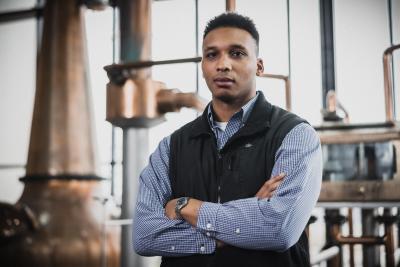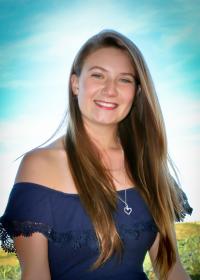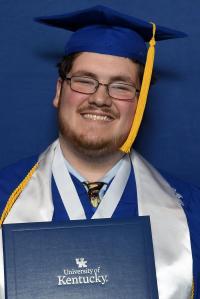A&S grants to undergraduate researchers stimulate collaborations with faculty, finding new stories to tell and helping humanity in many ways
By Richard LeComte
 Lily Vossekuil, Elizabeth Lorch and children working to improve their comprehension came together in the summer of 2021 to show how undergraduates and faculty can collaborate on research that benefits the Kentucky community.
Lily Vossekuil, Elizabeth Lorch and children working to improve their comprehension came together in the summer of 2021 to show how undergraduates and faculty can collaborate on research that benefits the Kentucky community.
Vossekuil, a psychology major, did her research under the direction of Lorch, associate dean for research and professor of psychology, and her colleague Angela Hayden. They worked together in a first-year program organized by the Office of Undergraduate Research and the College of Arts & Sciences, funded by the UniversityвАЩs Office of the Vice President for Research and by donors to provide intense research experiences in the summer and throughout the academic year for undergraduates. Vossekuil worked remotely to investigate ways to help children improve how they understood narratives.
вАЬItвАЩs been an amazing experience,вАЭ said Vossekuil, whose project investigates the effects on comprehension from an intervention that teaches children to understand narrative structure. вАЬI have been able to kickstart my senior honors thesis, which is a year-long project. I was able to kind of get ahead of the game by finding a research question and also understanding the recent research processes that are involved.вАЭ
As part of her project, Vossekuil learned to observe and code positive attitudes and behaviors in their interactions to arrive at some quantitative data on how gains in comprehension may be related to behaviors during learning sessions. In addition to expressions of positive emotions during lessons, Vossekuil also coded behaviors that might interfere with learning, such as inattentiveness.
The opportunity to work directly with a researcher, Lorch said, added immeasurably to VossekuilвАЩs research experienceвАФeven if they had to do it remotely.
вАЬIвАЩve served as a faculty mentor for years,вАЭ Lorch said. вАЬIt used to be that we were doing a lot more face-to-face encounters where many of my students were able to work in person with children who were research participants in my studies, so this was a somewhat different experience because she couldnвАЩt work directly with any children. Lily did come into my research space to work on some of the data, but we did most of our work remotely. Even with all that, it was a great experience.вАЭ
 The University has funded undergraduate research for many years, Lorch said, but in 2021 the Office of Research shifted its funds and administration to the colleges. A faculty committee from A&S set up an application process in spring 2021 and chose more than 30 projects to fund based on a review of student proposals, the studentsвАЩ GPA and previous research experience.
The University has funded undergraduate research for many years, Lorch said, but in 2021 the Office of Research shifted its funds and administration to the colleges. A faculty committee from A&S set up an application process in spring 2021 and chose more than 30 projects to fund based on a review of student proposals, the studentsвАЩ GPA and previous research experience.
The A&S faculty committee was able to spread the funding out among more students than could have been supported by the funds from the University alone. VossekuilвАЩs research, for example, was funded by the Donald C. and Penney P. Rogers Scholars Fund. Lorch worked with two students: Vossekuil and Kaitlyn Wiliams, whose project focused on improving social problem-solving skills of elementary school children.
Within each project undergraduates took on through this research program lies the potential either to help lives or to bring forward stories of triumph. Student undergraduate research grants assisted students in many different fields, including history and chemistry. Lorch said the College is seeking students doing research in the humanities as well as STEM fields.
For example, Qwenton Briggs was awarded a Robert and Anne Trunzo Scholarship to gather an oral history of women working in the bourbon industry. He worked with Janice Fernheimer, Zantker Charitable Foundation professor of Jewish Studies.
вАЬWe interviewed 20-plus women with various roles within the industry,вАЭ said Briggs, a senior from Louisville majoring in history. вАЬWe had people who were chemists, and some who were general counsel of certain distilleries. We put it all up on one archive, and we indexed the interviews.вАЭ
The project was titled вАЬIndex of Women in Bourbon.вАЭ He got to meet several trailblazers in the bourbon field, and he also worked to catalog the work of others. One womanвАЩs story made an impression on him.
вАЬOne who stands out for me is Lucille Allen,вАЭ he said. вАЬSheвАЩs actually a big artist nowвАФshe does ceramics for therapy. She is recognized as the first Black chemist in the bourbon industry. She worked for the Brown-Forman Distillery. That obviously was right after segregation. She was one of the first people to break through, not only for bourbon but for chemists overall.вАЭ
Speaking of chemistry, Wyatt Ringo, who graduated in December with a degree in chemistry, worked with Samuel G. Awuah, assistant professor of chemistry, on a project titled вАЬNovel Small Molecule Inhibitors of ARID4B.вАЭ
The ARID4B gene encodes a protein that figures in the development of breast cancer. Ringo and his mentors have modeled certain substances that could inhibit the ARIDB4 protein and thus help check tumor growth. Ringo started the project in January 2021 and continued with it through the summer. A Rogers Scholarship helped him and his mentors buy additional materials to study.
вАЬThe compounds that are possible anti-cancer agents target a specific domain that could end up regulating the growth of breast cancer and also possibly colon cancer,вАЭ Ringo said.
 вАЬDr. Ofori, who was a grad student at the time, had a previous project in which he developed a single compound that had these properties. My contribution to that project was to take off from that initial compound and add to it to see if we could get better results.вАЭ
вАЬDr. Ofori, who was a grad student at the time, had a previous project in which he developed a single compound that had these properties. My contribution to that project was to take off from that initial compound and add to it to see if we could get better results.вАЭ
Students who participated in the program got to present their findings at the DeanвАЩs Cabinet meeting in October 2021, and some of them had the opportunity to meet directly with donors.
The students also will participate in a conference looking at their research in April 2022. Lorch said sharing their work is key to their development as students and scholarsвАФa key goal in the study of the liberal arts and sciences. The students already have had small informal conference opportunities to share their work.
вАЬI think what the conference really helped to do was to foster a sense of community among some of the students who participated that day,вАЭ she said. вАЬThey got to talk to one another about their projects and their experiences.вАЭ&
